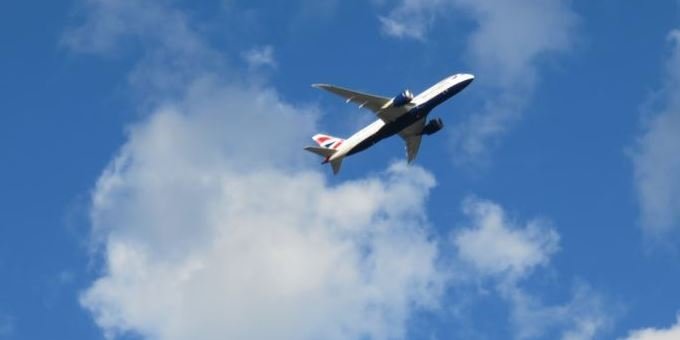
07-11-2022
More than 50 nations do not require a visa to visit Europe, particularly the Schengen Area.
In November 2023, the European Union will implement the European Travel and Information Authorisation System (ETIAS) for visa-free nations.
ETIAS is not a visa; rather, it is an electronic travel authorization that may be obtained quickly with an online application.
To enter Schengen nations for stays of up to 90 days, visa-exempt foreigners will need to get an ETIAS through the system.
Although ETIAS will be a new entrance requirement for Schengen nations, the registration process will just take a few minutes. The majority of applications should be granted quickly after they are submitted.
Nationals of the following countries can apply for ETIAS and travel to Europe without a visa:
COUNTRY OF ORIGIN OF THE TRAVELLER TO EUROPE
- Albania
- Antigua and Barbuda
- Argentina
- Australia
- Bahamas
- Barbados
- Bosnia and Herzegovina
- Brazil
- Brunei
- Canada
- Chile
- Colombia
- Costa Rica
- Dominica
- El Salvador
- Georgia
- Grenada
- Guatemala
- Honduras
- Hong Kong
- Israel
- Japan
- Kiribati
- Macao
- North Macedonia
- Malaysia
- Marshall Islands
- Mauritius
- Mexico
- Micronesia
- Moldova
- Montenegro
- New Zealand
- Nicaragua
- Palau
- Panama
- Paraguay
- Peru
- Saint Kitts and Nevis
- St Lucia
- St Vincent
- Samoa
- Serbia
- Seychelles
- Singapore
- Solomon Islands
- South Korea
- Taiwan
- Timor Leste
- Tonga
- Trinidad and Tobago
- Tuvalu
- Ukraine
- United Arab Emirates
- United Kingdom
- United States of America
- Uruguay
- Vanuatu
- Venezuela
WHICH COUNTRIES CAN I VISIT IN EUROPE WITHOUT A VISA?
If you are from one of the countries listed above, which have a visa-free agreement with the EU, you may visit the Schengen Area without a visa for short term stays.
However, please note that not all European member countries are part of the Schengen zone. The Republic of Ireland, for instance, is not a Schengen member country.
WHAT COUNTRIES ARE IN THE SCHENGEN AREA?
The Schengen Area is made up of European countries that have eliminated border controls at their common exterior boundaries.
The Schengen Area has 22 EU member nations, four FTA member countries, and three micro-states.
Nationals of non-visa-required countries will be required to apply for an ETIAS travel authorization beginning in November 2023.
ETIAS will also be required for travel to Schengen Member States that have not yet completely implemented the Schengen Agreement. These are some examples:
Third-country nationals who are not visa-exempt must enter the Schengen zone with a Schengen visa.
To travel countries outside of Schengen, you must first notify an embassy. For example, in order to enter the United Kingdom, foreigners must fulfil the entrance criteria.
HOW TO TRAVEL TO EUROPE WITHOUT A VISA
To travel to Europe without a visa, you must have a passport that is valid for at least three months beyond your intended stay in the area.
However, before planning your trip, be sure you are from a visa-free nation.
Furthermore, all international tourists are encouraged to obtain travel or health insurance in case of an emergency.
Visas are not required for international tourists from visa-exempt countries entering the Schengen Area. However, non-Schengen EU nations have their own admission rules.
WHICH EUROPEAN COUNTRIES ARE NOT IN SCHENGEN?
The European nations that are not members of the Schengen zone are as follows:
- Albania
- Armenia
- Azerbaijan
- Belarus
- Bosnia & Herzegovina
- Bulgaria
- Croatia
- Cyprus
- Georgia
- Ireland
- Kosovo
- North Macedonia
- Moldova
- Montenegro
- Romania
- Russia
- Serbia
- Turkey
- Ukraine
- United Kingdom
These European nations have their own visa rules that may differ from those of Schengen. ETIAS, on the other hand, will be required.
WHICH VISA-FREE COUNTRIES WILL NEED THE ETIAS TRAVEL AUTHORISATION?
The nations that will require an ETIAS travel authorization are those that are not required to get a visa to enter the Schengen Area.
To complete the ETIAS online form, a citizen of one of the qualifying countries will only require an Internet connection and a computer, mobile device, or tablet.
Before completing the form, eligible travellers must fulfil the ETIAS standards. Applicants must have a valid passport, an email account, and a debit or credit card to pay the ETIAS charge.
Travelers must supply personal information, trip details, and passport information to complete an ETIAS application.
Each candidate must answer a number of security questions about their health, criminal record, and recent visits to war zones.
Most ETIAS applications are expected to be handled in a couple of minutes.
However, in rare situations, some ETIAS applications may be manually processed to ensure the correctness of the traveller’s data.
All traveller information is compared to international security databases and the Schengen Area.
WHO NEEDS TO GET THE ETIAS VISA WAIVER TO TRAVEL TO EUROPE?
Before boarding their aircraft, every citizen of a qualifying nation who wishes to travel to Europe without a visa, especially to the Schengen Area, must register in the ETIAS system.
The ETIAS visa exemption is a security mechanism designed to strengthen immigration control after a person arrives on European territory.
The EU is dedicated to making Europe safer. They seek to do this by deploying the ETIAS system and vetting visa-exempt travellers before they reach on European soil.
Foreigners who desire to visit any Schengen Area member nation must get a Schengen visa or, as of November 2023, the ETIAS visa waiver.
Once the EU implements the system, the ETIAS authorization must be obtained at least 72 hours before departure.
To visit a Schengen nation, all visitors, including children, must register with the ETIAS system.
Once accepted, ETIAS is valid for three years and allows for stays of up to 90 days in a 180-day period.
